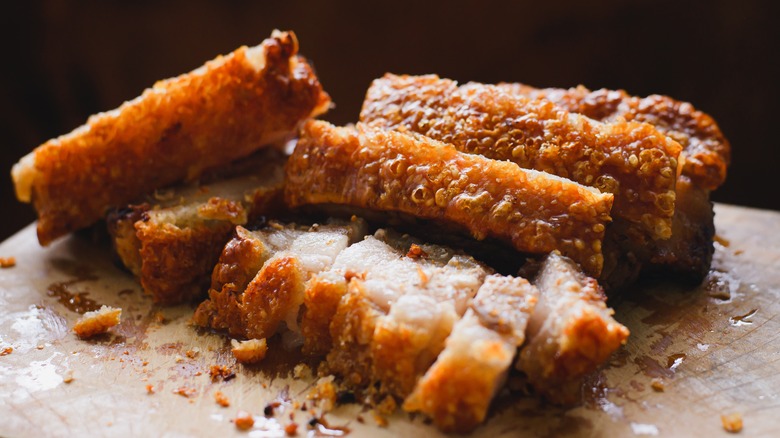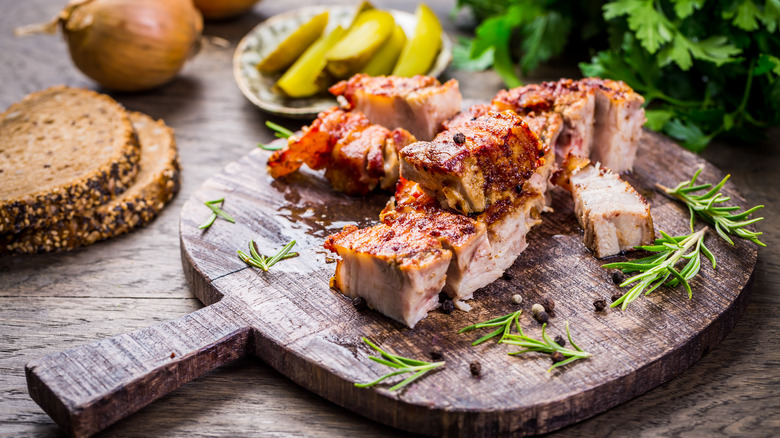Why You Should Always Cure Pork Belly Before Cooking It
Pork belly is a deeply indulgent, delectable meat that melts in your mouth like butter. The secret to marrying the perfect flavors with the right texture lies in the curing process. We talked to Rich Parente, chef and owner of Clock Tower Grill in Brewster, New York, to learn more his curing tips for pork belly. Chef Parente and his wife, Cassie, who is also the co-owner and general manager of Clock Tower Grill, run the Clock Tower Farm. Not only do the Parentes raise lamb and pork on their farm, but they also grow fruits and vegetables as well as produce their own honey and maple syrup — so they are experts on making farm-to-table ingredients shine on the plate and in your mouth.
According to chef Parente, curing pork is a must. He says, "I like curing my pork belly because that process ... allows flavors to penetrate all the way into the meat and improves the texture, which can otherwise be tough." Parente uses a simple curing mixture of salt and maple syrup, the latter was likely produced on his farm. Parente says, "Curing [the pork belly] in salt and maple syrup creates a great sweet-and-savory flavor profile." Maple bacon, anyone? When it comes to cooking pork belly, there's no need to be intimidated, it just takes a little bit of patience and a good cure-blend.
How to cure and cook pork belly
Curing pork belly is all about ratios. If you're curing a 3-pound slab of pork belly, we recommend using ¼ cup of maple syrup, ¼ cup of brown sugar, ¼ cup of kosher salt, 1 tablespoon of freshly ground black pepper, ½ cup of distilled water, and, most importantly, ¾ teaspoon of pink curing salt in your curing mix. Cut your pork into pieces that will fit in your pan and give them a good massage with the cure mix. Parente recommends that at-home chefs "cut smaller pieces and cure it in a Ziploc bag for up to 10 days." Next, place the Ziploc bag in the refrigerator while your pork cures, and don't forget to flip the pork every day to make sure all of the sides get coated in the mixture that inevitably seeps off of the meat.
Once you're ready to cook your pork belly, check out our pork belly temperature trick to get that crispy, crunchy pork belly skin. If you're adding your cured pork belly to a dish like stir-fry, consider cooking it twice to make sure everything is perfectly cooked and that you still maintain those delightful opposing textures throughout. Pork belly is not an everyday ingredient, so don't let the curing time and cooking process deter you from giving this extra special, super delicious crowd-pleaser a try.

